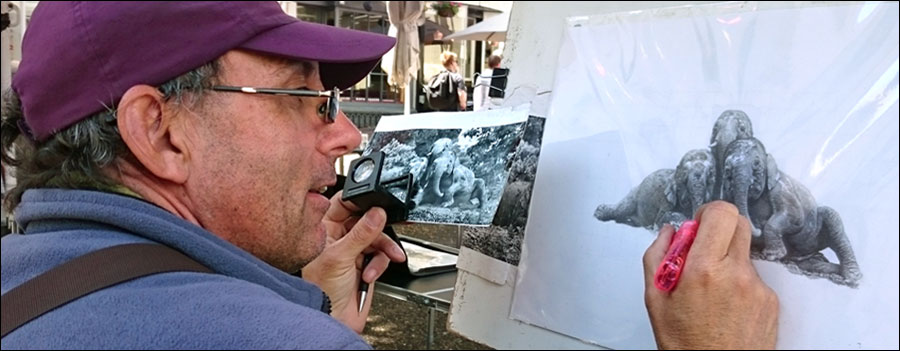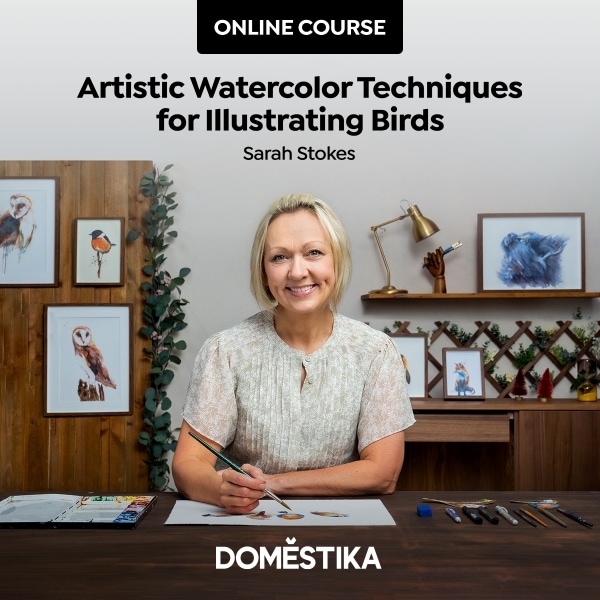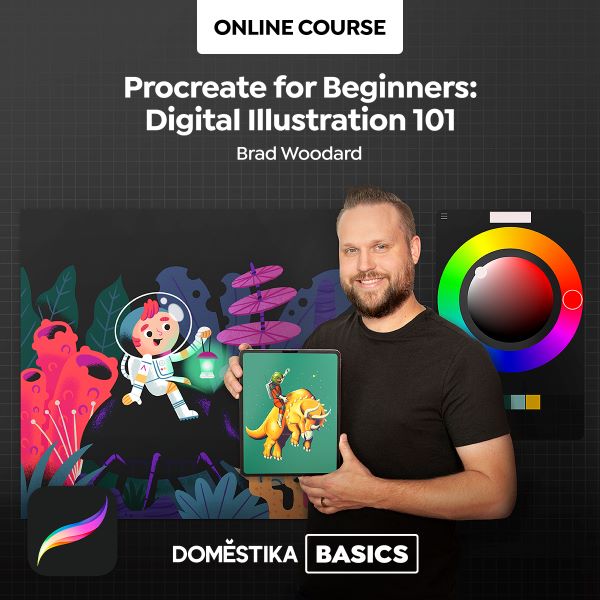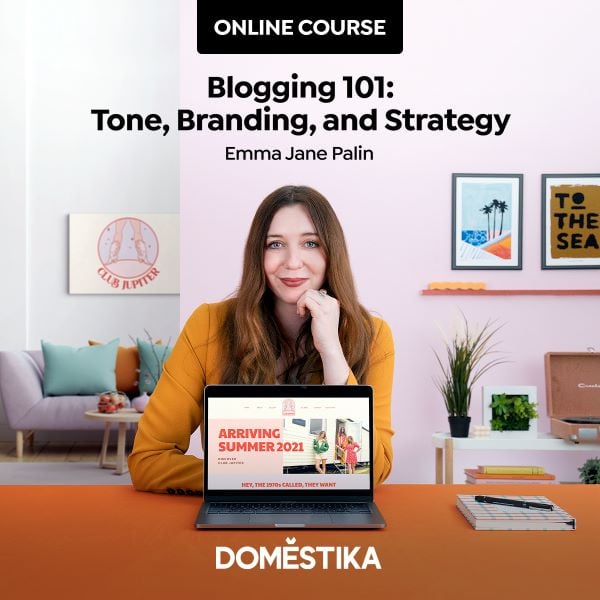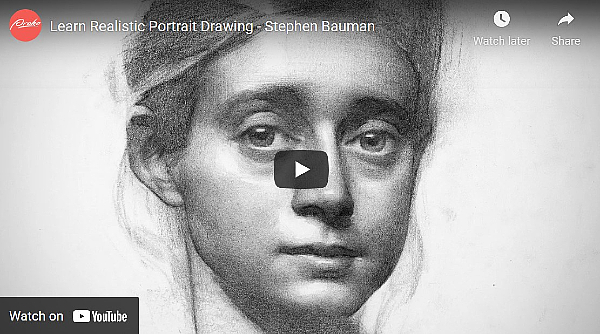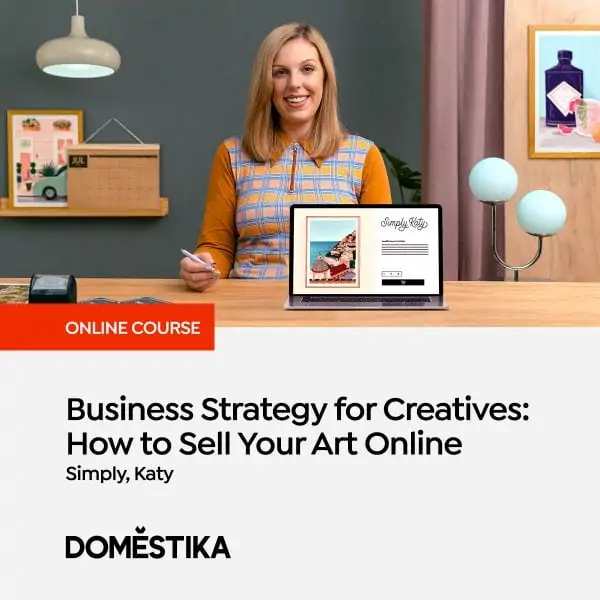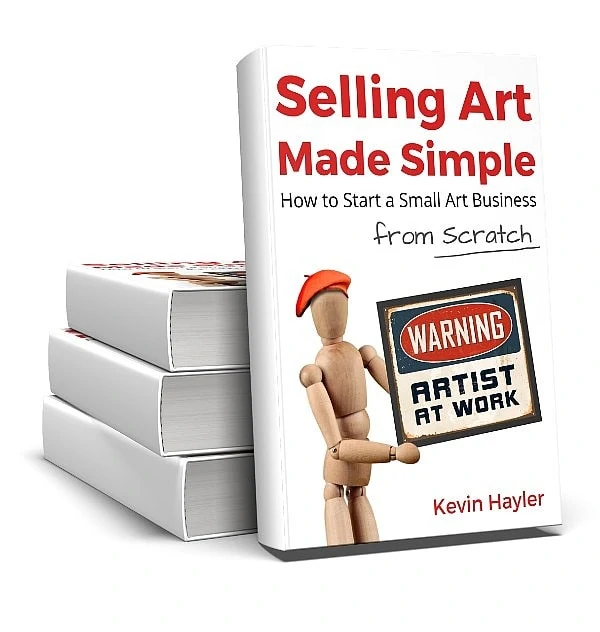Kevin Hayler: Professional Wildlife artist, author, and traveler.
Can you make money teaching your art skills? It’s a scary thought and for understandable reasons, but there can be good reasons to try. As an artist and trader of 20 years plus, I’m well placed to present the pros and cons of this approach to selling.
Teaching your art skills serves a number of purposes but inevitably there are two sides to every coin.
On the Plus Side
- It’s productive
- Establishes your authority
- Generates income
On the Minus Side
- You’re open to critical scrutiny
- Your work may suffer
- You must be entertaining
Is teaching your art skills right for you?
Let’s find out.
Disclaimer: When you buy something via my affiliate links I earn from qualifying purchases and sometimes earn a commission, at no extra cost to you. I am an Amazon Associate among others. I only recommend trusted sites.
The Case For Teaching Your Art Skills
I draw at work, by which I mean, while I’m selling. I get to produce new work and sell it at the same time which brings me to perhaps the biggest benefit of doing both.
Teaching and Selling is Productive
Do not underestimate the advantages of maximizing your time. Most artists either sell or make their artwork but seldom do both. This creates the productivity paradox.
If you’re making you aren’t selling and if you’re selling you aren’t creating.
You are in effect limiting your capacity to succeed in either direction. It would be far more efficient to make your work and sell at the same time, but can you do it?
My medium of choice is the humble pencil and I didn’t choose it by accident. I chose it not just because I’m colorblind, (ironically I started out as a painter) but because it’s portable.
This is useful: How Do You Travel With Art Supplies? (A Practical Guide)
All you need is a pencil and paper and in theory, you can make money anywhere. In my youth, I hitched through New Zealand and Australia funding my travels simply by drawing hostels and doing portraits. I learned that having an audience created a good environment for commissions and art sales.
Carrying just a pencil case allowed me to set up quickly and stop and start at will. There is no mess, no paint drying, and I can easily work outdoors.
I extended that principle some years later when I set up my first market stall. I attracted potential customers by demonstrating my artistic skills.
My aim was simply to attract the public and entice them to come over and have a look. I could draw in small concentrated bursts but in reality, I was keeping a sneaky eye on what was happening around me and alert for any display of interest. My motive was to sell my art prints.
Make no mistake, I wanted to be interrupted. I was waiting for a question so that I could engage with my potential buyer. Drawing, in this context, is a sales hook.
Now it’s important to realize that there are two types of customers, art lovers who are intrigued by your talent and want to see your work, and amateur artists who want some helpful tips and to learn new skills.
They are entirely different demographics and there is little crossover between them. Artists don’t buy art, they buy knowledge. You have to know your target audience to capitalize on this passive selling approach.
Teaching Your Art Establishes Your Authority
For most people this is true. Drawing in full view of the public goes some way to establishing your authority. They can observe you in action and see that you can do what you say.
I say ‘most’ because it’s a sad fact that some people are very suspicious. A minority will try to call you out as a fake. It’s tiresome more than hurtful. The obvious insult is the ‘you’ve traced it’ line.
Read this post: Tracing Art – Is It Good or Bad? When Is Tracing Cheating and Is It Ever OK?
I have no secrets. Not only do I reveal the tricks of the trade, stuff only a competent artist would know, but I demonstrate one or two techniques at the same time. My expertise is easy to prove.
For those folk with a passion for the subject matter, in my case wildlife, I can share their enthusiasm with my knowledge of the natural world and of traveling.
This is how I make a living. If you want to do the same, it’s all laid out for you to copy!
I know what I’m talking about and I can back up everything I say with confidence.
My interest shines through and like anyone talking about their pet subjects, I become more intrigued by my customers’ experiences and more animated in my response and this is very attractive to people.
One word of caution, don’t get so carried away with your chat that you forget your primary purpose for being there. I’ve lost so many sales by enjoying the chat and not closing the sale!
Your aim is to establish your authority in your areas of expertise, to gain trust, and build a rapport that subsequently leads to a sale – hopefully.
Teaching Your Art Online
Your authority online is also improved if you can create some video content and post that on your own website. A great way to do that is by making a Youtube video to accompany an art blog.
There’s no need to make an entire Youtube channel, but having said that, many artists make a lot of money that way.
Google owns Youtube and if you can target the right keywords you can get a lot of exposure for free.
Youtube videos are easier to rank, not only on their native platform (2nd largest search engine in the world) but also on Google. Your article gets a boost in the Google search engines if it is linked to your video.
When Google recognizes your authority you will benefit from more traffic and customers.
One of the key indicators on the YouTube platform for success is engagement. The comments section is your opportunity to answer questions and demonstrate your expertise and rank higher. You need more than a ‘like’, you need comments.
Again you will have unkind comments and a written insult is worse than to your face in some ways. Unfortunately, it’s part and parcel of being on Youtube and other social media platforms. Don’t rise to the bait.
Kelsey has over 200,000 subs, on YouTube. These are some of her tips.
Teaching Art Generates More Sales
In order to cash in on your skills, you must have something to sell. Teaching your talent is the obvious gateway to extra money, or indeed, to a full-time art business.
You can sell a product, a service, or your expertise:
- Draw and paint in a public space to attract custom
- Make an online course
- Write your own blog
- Youtube instructional videos
- Teach art classes and workshops
- Private lessons or coaching
- Teach on Patreon
I’ll write a bit about each choice.
Drawing and Painting in a Public Space
You are not limited to setting up your easel in an art fair or festival, you can approach venues, hotels, and art galleries and ask if they would like an artist in residence. Finding a permanent pitch might be tricky but a series of temporary events could work.
Start thinking outside the box and throw off the starving artist myth. Be proactive and look for spaces where you can sell. A friend of mine has recently found a free pitch outside a shop in a busy lane. It’s always worth asking.
If you are not selling your art directly, you can find commission work and start building a mailing list.
This will show you how: How to Find Art Commissions: A Selling Guide
In order to cash in you will have to sell your art in a particular way. You mustn’t be too eager nor too occupied. Ideally, you must cultivate an air of attentive indifference.
I want people to notice me and take an interest. I do this by sitting with my back to the public which admittedly, is a risky strategy. I do it to tempt people to stop and look over my shoulder.
When someone approaches to see what I’m doing, I glance over my shoulder, say ‘hi’, and I resume my drawing straight away. I don’t turn fully around, it would freak the onlooker out. I make no real eye contact.
If there’s a child watching, and assuming the parent is close by, I will ask if they want to have a closer look.
I’m hoping for a question, If nothing is forthcoming I will offer up an explanation anyway. At the demo’s end, I will gauge the reaction of the family and point out that the other pictures in my display were made in the same way.
It’s a neat segue to encourage my audience to browse.

At this point, I have completely changed the dynamic from a guy engrossed in his artwork, to a busy stand of interested and engaged ‘customers’.
Not everyone will buy something of course, but as every trader knows, people attract more people and that encourages more sales.
I sit on a high stool as I draw. It allows me to rise quickly to the task. I like to stand, it gives me more control. I can maneuver and shift my space to suit the situation. A low seat creates a poor impression. It looks lazy and makes me feel submissive.
My demo is a borderline gimmick. I show my onlookers a few tips and my favorite ploy is to show people how I use my battery eraser!
This is how I do it: How To Draw in Public: The Experience of an Artist
The whirring and spinning sound makes people pay attention and then I make a nifty series of lines, dots, and squiggles to my drawing. I get gasps just by entertaining people with a few tricks of the trade. It’s like a revelation to people, especially children.
Top Tip: Keep your demos very brief. Attention spans are short, and you must get your message across clearly, concisely, and with pace.
It’s all a performance but it gets me and my stall noticed and that’s what it’s all about.
Making an Online Course
If there is one way to make big money it’s through online learning. People regard education as a premium product and are willing to pay extra for the added perceived value. The same information packaged as an eBook will sell for a fraction of the price.
Online video courses can be sold in a variety of ways. You can sell courses or art classes on sites such as Domestika, Udemy, Proko, and Skillshare, or join a teaching platform like Teachable and Thinkific.
- Is Domestika Worth It? The Pros and Cons for Artists and Designers
- Is Udemy Worth it? Pros and Cons For Artists and Designers
- Are Proko Courses Worth It? A Review – Pros and Cons
- Is Skillshare Worth It? The Pros and Cons for Artists and Designers
You will have the most success selling your courses from your own website, where the profit is all yours. The drawback is having to do all your own marketing. You have two choices. You can sell courses directly for a fixed price, or as a limited-time offer.
You can build a targeted email list by offering a very useful download as a freebie and drip feed a series of teaser emails before presenting your now or never offer. Alternatively, you can create a sales page and direct your visitors to a fixed-price evergreen offer.
Check out Domestika. It’s one of the largest online creative communities, with millions of members around the world. It started life as a Spanish platform and is now based in the US. It actively seeks English speakers
Writing Your Own Blog
Is there any point in writing a blog? Yes, but it’s the long game. It takes a long time to generate enough views and there’s a huge learning curve in getting a blog post to rank.
When you start to see significant traffic you can monetize your site with advertising, affiliate links, and your own products.
Your biggest challenge is deciding who to target, art lovers or fellow artists.
Get to grips with blogging with Emma on Domestika
Art lovers and art collectors will want to see your works in progress and enjoy seeing them gradually emerge. This is similar to the way I sell my prints from my market stall.
They want to know about you and your art but not the technical stuff. They will buy your wall art, but they couldn’t care less what paper you used.
Artists on the other hand want to learn HOW you do your art, not WHY. They require tuition and will buy your online courses. They’ll also buy the paper you used via your affiliate links, but very few will want your wall art!
They are a very different crowd.
Youtube Instructional Videos
Making video tutorials makes a lot of sense when you are teaching a visual medium. There are two ways to approach it.
You can make videos to complement your blogs, and videos to build a following. I’ve already discussed the SEO advantages of making targeted videos, but how do you profit from making a Youtube channel?
Once you reach a threshold of 1000 subscribers or 4000 watch hours you are eligible to run ads. Your ad revenue can be a significant income stream, it depends on your type of audience and the size of your following.
You can also promote products and services, and tell your viewers to check out the links below the video. You can redirect potential clients, to your website, Etsy shop, or to art courses. If you haven’t got your own course, send them to another via an affiliate link.
The biggest drawback for most people is the fear of appearing on camera. Don’t let that stop you can always make no-face videos with a voiceover.
Making presentable Youtube videos is hard work, it can take many hours to put together, and some investment is needed upfront.
You’ll need a camera, a good quality microphone and some lighting.
One of the most successful artists on YouTube is James Gurney with over 500,000 subs.
Then there’s choosing video editing software and learning how to use it, writing the script notes, and most important thing of all, making your artwork.
If you do manage to get it together, you can at least repurpose your videos for other social media platforms and use the transcript to write a blog post.
Teaching Art Classes and Workshops
You don’t have to be a qualified art teacher to teach your talents to others and setting up a workshop or hosting classes is a great opportunity to make good money.
Students love the personal touch of low-key intimate meetings where they can share their experiences with others and get individual help when they need it.
It helps if you have teaching skills but all you need is confidence. It might be a good idea to sign up for a few classes yourself to get an idea of what to expect and to gauge the needs of your fellow students. Call it market research.
This Youtube course by Alex Genadinik on Udemy has generated over 26,000 sales. Worth checking out.
Many years ago I met a young woman whose main income was running informal watercolor workshops. Her work was not what you’d call conventional, it was expressive and personal. Her colors were vivid and bold and I later found out that she was colorblind. Extremely rare for women.
Yet she had the confidence and personality to set up her own workshops. She hired a local community center or wherever she could find a good deal and posted ads in local art shops to get customers.
This was before the internet took over life. These days you could find local Facebook groups or use the FB marketplace.
I can’t recall her fees, it was 20 years ago, but I do recall my amazement that she could earn £1000 per week from just a few hours per week.
Private Lessons and Coaching
Keeping to the same theme of offering a personal touch, there are people with the money to pay for a private coach and one-to-one lessons. It’s an opportunity to sell your knowledge and skills without the pressure of teaching to a class of students.
Teaching locally could be a stepping stone to building your confidence before starting a workshop and you can find customers in the same way. I get requests for personal lessons while I’m working at my market stall.
Most people will look for opportunities online. You will have a wider audience but there is the tricky issue of the time difference. A live call might be awkward. One way of getting around this problem is to offer recorded lessons in response to their questions.
That gives you the flexibility to offer a researched answer, film a quality video, and plan your time. The video quality is less important if you are offering advice without demonstrating your art skills.
You can advertise your services on forums and Facebook groups with links back to your website. Take payments with a Paypal button, no need to get fancy.
You can do everything yourself via Zoom but there are two alternatives worth mentioning. You can join Twitch.tv and Discord.
Check this out: 25 Platforms for Artists to Sell Their Art Online and Make Money
Twitch is a video streaming platform where artists broadcast their works in progress and contributors can monetize their channel after meeting some minimum requirements.
You need to be active for 500 mins or 7 out of 30 days per month to join the affiliate program and get subscriptions, ad revenue, and donations.
You can market your services in your live stream as you work and send visitors back to your website.
Discord is a social forum for networking and hanging out, via voice, video, and text. With prior permission, you can monetize your server and accept fan donations, and set up a private members area for paying customers. It’s similar to Patreon.
You can also run ads and add affiliate links and direct people back to your website.
Joining Patreon
Patreon offers artists the platform to teach and cultivate a loyal fan base. It’s a paid membership business model where creatives offer their services in exchange for a monthly rolling fee.
Patrons can join and choose to join a tier, or plan, that suits their needs and budget. I followed Stephen Bauman for 6 months. This is one of his videos on Proko
Stephen Bauman is a classically trained artist and has a very academic approach to his art. This guy knows his stuff and he’s a very good tutor
He has 4 paid tiers:
- Atelier Tier for $10/m and have access to all his pre-recorded instructional videos and materials list.
- Block-in Bootcamp Tier at $25/m gives you the videos plus a monthly live block-in session and access to his Discord server.
- Mentorship costs $75/m and includes all of the above and a 25min 1 on 1 critique via Zoom.
- Mentorship Plus costs $150 and gets you everything plus a one-hour critique via Zoom.
I found him on Instagram and I also follow him on Youtube. He uses both platforms to promote his Patreon site.
Success on Patreon involves a fair exchange with your supporters. It’s not passive, you must be active and provide good value.

The Case Against Teaching Your Art
Not everyone is cut out to teach or be the center of attention so let’s explore a few of the drawbacks of presenting your skills. Have you got the personality to teach your art skills?
Teaching Art Opens You To Critical Scrutiny
It’s the scariest thought of all – being criticized in public and being JUDGED!
Like it or not, there is a small section of the community unable to contain themselves,
- “Don’t you ever do anything else?”
- “They’d be quite good if they were in color”
- “I shared a cell with a guy who could draw like that”
Some people will have no time for you or your art from the very outset and for some reason they want you to know about it.
It’s the price you pay for being in the public eye.
There are all manner of people out there, from the pompous to the profane and you must hone your people skills to deal with them, or in the case of online abuse, not take the bait.
Others will put you down, not in spite but with a blunt disregard for your feelings.
A while back I was showing my prints to a couple when the chap asked about the originals. I replied that the one he was admiring was reserved for one of my regular buyers for £500.
He was aghast…“What!! £500 for that?”
It was so over the top, I laughed but I still sold them 2 prints.
If there’s a bonus when it comes to unkind put-downs, it’s the positive backlash I get from bystanders annoyed by such bad manners. Some people are so keen to demonstrate their disapproval that they buy a print to make a statement.
It’s the law of unintended consequences.
Perhaps ‘comedians’ and show-offs are the most tiresome. You get to be the butt of their humor or worse still their advice.
- You’ve missed a bit
- It doesn’t look anything like me
- They’ll be worth money when you’re dead
It’s the same old crap said over and over. Very few remarks are original or funny. I deal with it in the only rational way I can. It goes in one ear and out the other.
Teaching Your Art Can Make Your Work Can Suffer
I don’t kid myself that I’m pushing any boundaries when it comes to making my art in public. If anything it stifles creativity.
I play it safe. Who wants to experiment when the act of making and teaching your art is part of the sales ploy?
I can’t afford to go wrong. I’m not going to invest all my time and effort on a wing and a prayer. I need results.
New styles, techniques, and changing subject matter are all risks that I’m seldom willing to take, not only for cold commercial reasons but because of the potentially negative comments of passers-by. And as for making artistic statements and metaphors, forget it.
The general public wants to see results, not the real process. Any demo’ must be brief. A summary of your skills is all that’s required.
Don’t make the mistake of thinking that your casual observer wants to know anything more than the bare highlights, you’ll bore them rigid. By the same token, explaining everything to a keen amateur risks boring yourself rigid.
N.B. Hobbyists will soak up your time, energy, and free information without buying anything. Be warned.
I’m seeking approval and positive feedback and that’s achieved by confidence and knowing what I’m doing, not by cutting loose and expressing myself.
It’s frustrating, a drawback, and a compromise.
Teaching is about communication and getting your message across in an engaging and concise manner. That’s why knowing how to tell your story, or any story for that matter, is vital.
Some People Think You’re a Fake
Even drawing in front of people will not be sufficient for everyone. I get accused of tracing or using Photoshop.
One of the reasons some people think I’m a fraud is because they never see me start the drawing. It’s true, I rarely start my drawings in public. If I did people would witness me drawing a grid, then spend time drawing the outline. Wouldn’t that be riveting?
Read this for more insight: Is Drawing From Reference Photos Bad? Are You Cheating?
I learned early on how limited attention spans can be, and don’t kid yourself that it’s because of the internet age, it’s always been that way, at least in my experience. And it’s not confined to the young, older people console themselves with that myth.
It makes perfect sense to start your work at home and get something on paper for people to see. I like having the outline in place, some rough shading, and the eyes drawn before it goes on show

If You Teach Your Art You Must Be Entertaining
Like so many artists, I’m quite introverted and if I appear otherwise it’s only because I’ve learned some good sales patter. I’m confident only when I’m in my comfort zone.
You may think that entertaining could easily be described as a positive reason to teach your art skills and I don’t disagree but it depends on your personality type.
I’m naturally low key and my energy levels vary wildly from day to day. There are days when just the thought of talking to anyone is an effort, but it has to be done.
These are useful tips: How to Motivate Yourself to Make Art: 11 Kickass Ways to Get Going
Every day I sit down and draw even if sometimes I feel like a performing monkey.
My job is to sell my prints by encouraging engagement whether I feel like it or not and I can’t pick and choose who takes an interest.
There’s a mixed bunch of people out there and let’s face it, not everyone has a full deck of cards!
Nor does everyone have the sensitivity to appreciate what you are trying to do. Some people lack the basic social skills you’d expect and some cultures have very different rules about body space.
Sometimes a stranger’s head will appear over my shoulder to inspect my work and be within kissing distance! Yuk… and then there are the touchers.
Some guys want to give you an encouraging pat on the back with a hearty…
“Keep up the good work!”
Almost without fail, it makes me jump. What possesses people to do that while someone is drawing is beyond me.
Perhaps the strangest example of having my space invaded was when a hobbyist came over to watch me draw and suddenly took the pencil out of my hand, while I was drawing! She wanted to see what grade of pencil I was using. I was speechless. It was so bizarre I had to laugh.
Perhaps the most alarming and regular hazard I face is the tendency for some people to touch my work. Presumably, the logic must be if it smudges it must be real!
You should read this: How to Protect and Preserve Your Drawings and Avoid Disaster
It’s such a common problem that now I cover everything in plastic to prevent disaster.
It’s the price you have to pay for turning your back on the public.
All that said, being informative is a highly effective sales hook. Delivering your message with brevity and with good humor is both entertaining and educational and works wonders with kids.
The most successful Youtube videos are also entertaining. The presenters have a good online presence and their personalities are crucial to their popularity.
I see only a few really good artists teaching online. Most are mediocre but with an engaging manner and it’s their relatability that gets results.
It’s a real skill to appear on camera and deliver a message. Not everyone can do it.
Get to Grips with your Art business with Katy on Domestika
Make Money Teaching Art: Final Thoughts
As a professional artist, the easiest way to attract the right people is to teach. You can attract art buyers with quick overviews of your creative process and sell the romance, or you can teach art skills to students with information-rich tutorials and sell your knowledge.
Either way, your aim is to prove your authenticity and use your artistic talent as a device to sell yourself, and subsequently your art or art services.
If you can be entertaining with it, you’re on to a winner.
Is it right for you? Only you can judge that, but now you have a better understanding of the perils and pitfalls and that will help you to make the right decision.
If you like the way I draw and want to try things for yourself, this is my basic kit:
- Pentel Mechanical Pencils 0.3mm
- Derwent Graphic Drawing Pencils
- Daler-Rowney Heavyweight Cartridge Paper
- Jakar Battery Eraser
- Tombo Mono Eraser Pen
- Faber Castell Putty Eraser
- Blu Tack
- French Box Easel
This is an extract from my guidebook and there is so much more to discover. If you’re serious about making a living with your art, start here!
If you’ve found this article helpful you might like these:
- Can You Copy Art and Sell a Painting of a Painting? I Found Out
- Pricing Art For Beginners: Originals, Art Prints, and Formulas
- How to Sell Your Drawings: 10 Steps to Success
- How to Sell Art Prints on Etsy: Mega Selling Guide
- What Size Art Sells Best? Frames and Apertures – FREE Chart
- What Kind of Art Sells Best? All The Secrets Revealed
- How to Name Your Art and Make More Sales – Copy This!
Plus find an ONLINE COURSE that suits you.
PIN IT AND SAVE IT


Hi, I’m Kevin Hayler
I’ve been selling my wildlife art and traveling the world for over 20 years, and if that sounds too good to be true, I’ve done it all without social media, art school, or galleries!
I can show you how to do it. You’ll find a wealth of info on my site, about selling art, drawing tips, lifestyle, reviews, travel, my portfolio, and more. Enjoy

